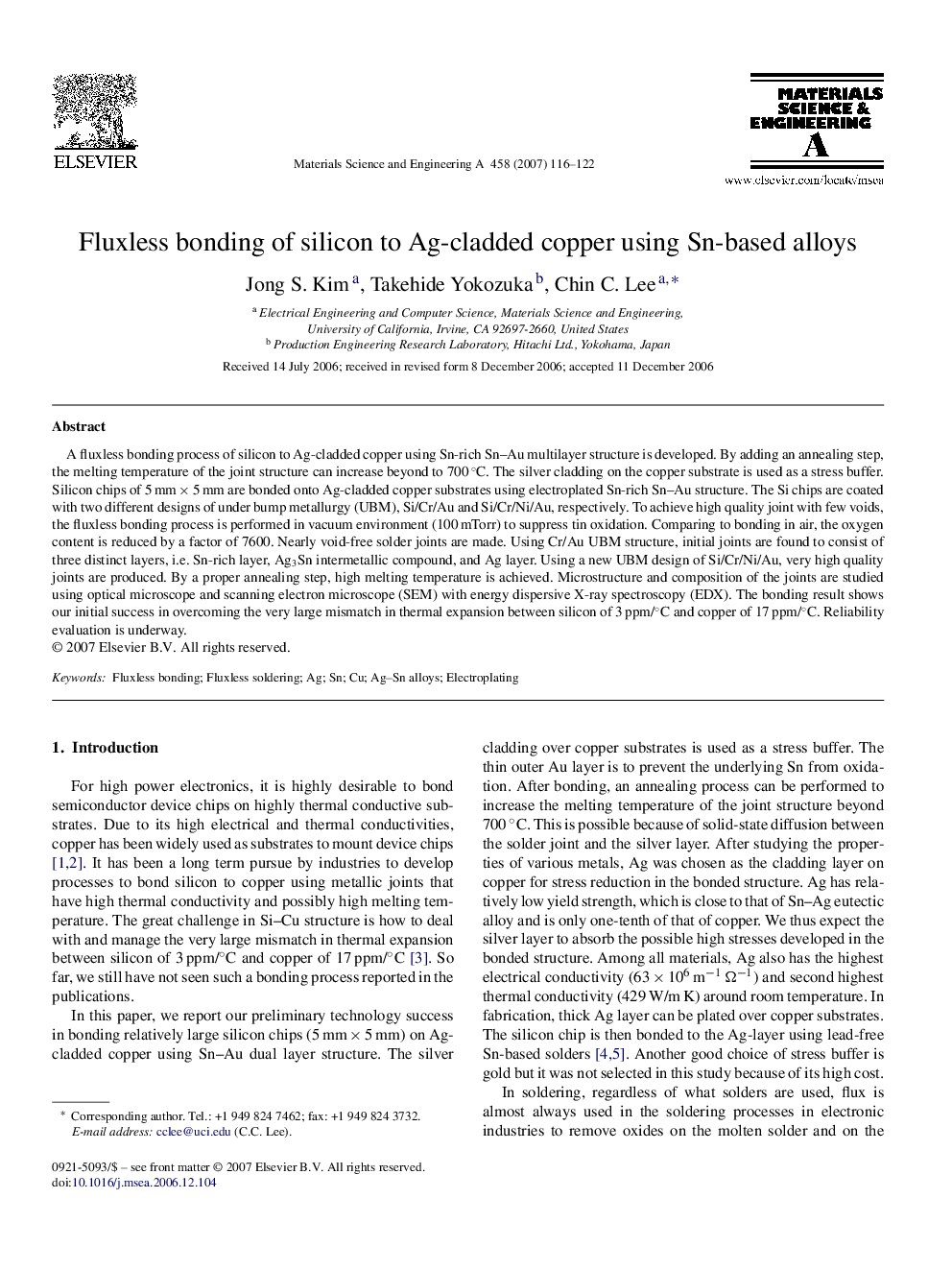| Article ID | Journal | Published Year | Pages | File Type |
|---|---|---|---|---|
| 1584018 | Materials Science and Engineering: A | 2007 | 7 Pages |
A fluxless bonding process of silicon to Ag-cladded copper using Sn-rich Sn–Au multilayer structure is developed. By adding an annealing step, the melting temperature of the joint structure can increase beyond to 700 °C. The silver cladding on the copper substrate is used as a stress buffer. Silicon chips of 5 mm × 5 mm are bonded onto Ag-cladded copper substrates using electroplated Sn-rich Sn–Au structure. The Si chips are coated with two different designs of under bump metallurgy (UBM), Si/Cr/Au and Si/Cr/Ni/Au, respectively. To achieve high quality joint with few voids, the fluxless bonding process is performed in vacuum environment (100 mTorr) to suppress tin oxidation. Comparing to bonding in air, the oxygen content is reduced by a factor of 7600. Nearly void-free solder joints are made. Using Cr/Au UBM structure, initial joints are found to consist of three distinct layers, i.e. Sn-rich layer, Ag3Sn intermetallic compound, and Ag layer. Using a new UBM design of Si/Cr/Ni/Au, very high quality joints are produced. By a proper annealing step, high melting temperature is achieved. Microstructure and composition of the joints are studied using optical microscope and scanning electron microscope (SEM) with energy dispersive X-ray spectroscopy (EDX). The bonding result shows our initial success in overcoming the very large mismatch in thermal expansion between silicon of 3 ppm/°C and copper of 17 ppm/°C. Reliability evaluation is underway.
